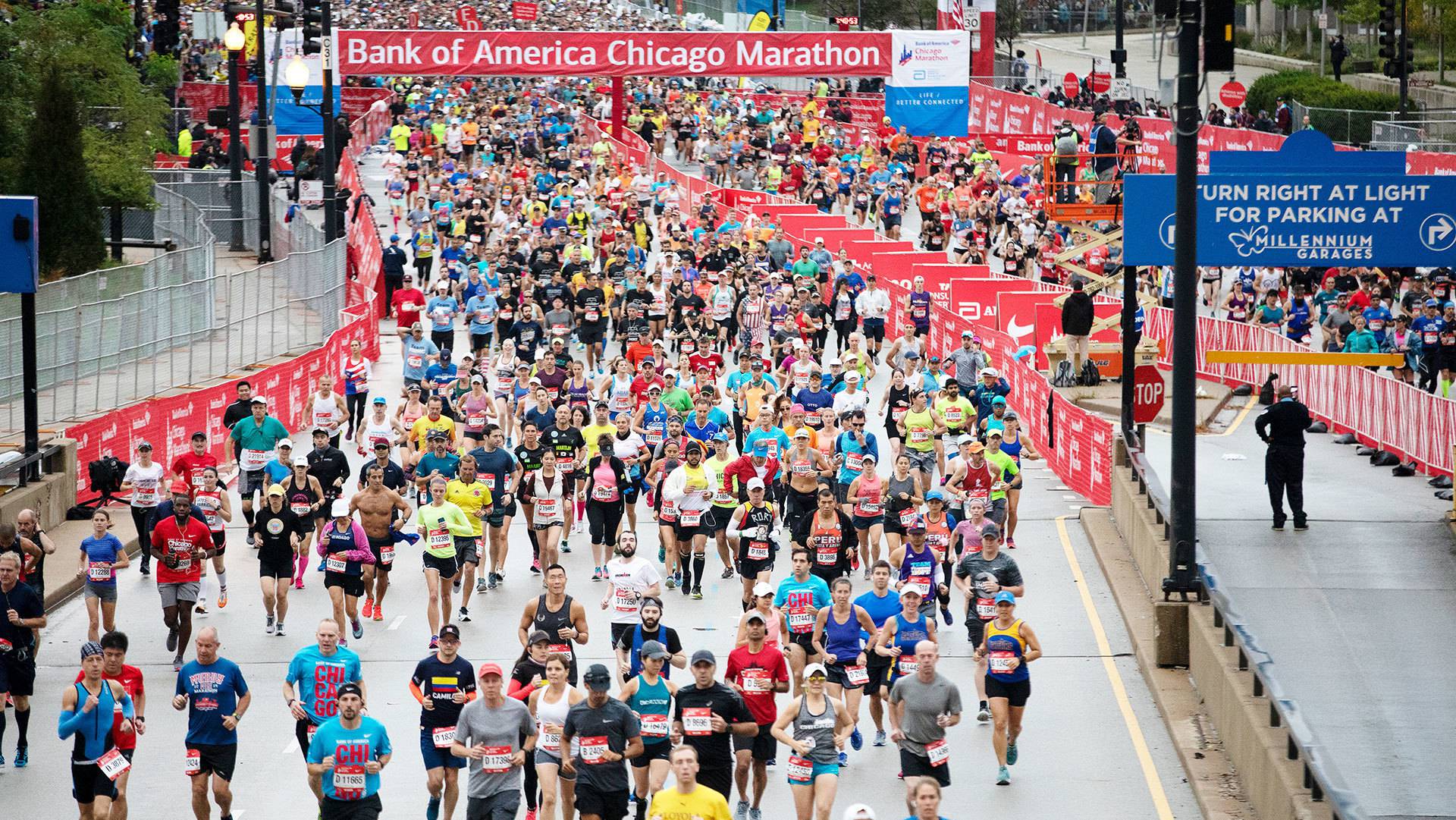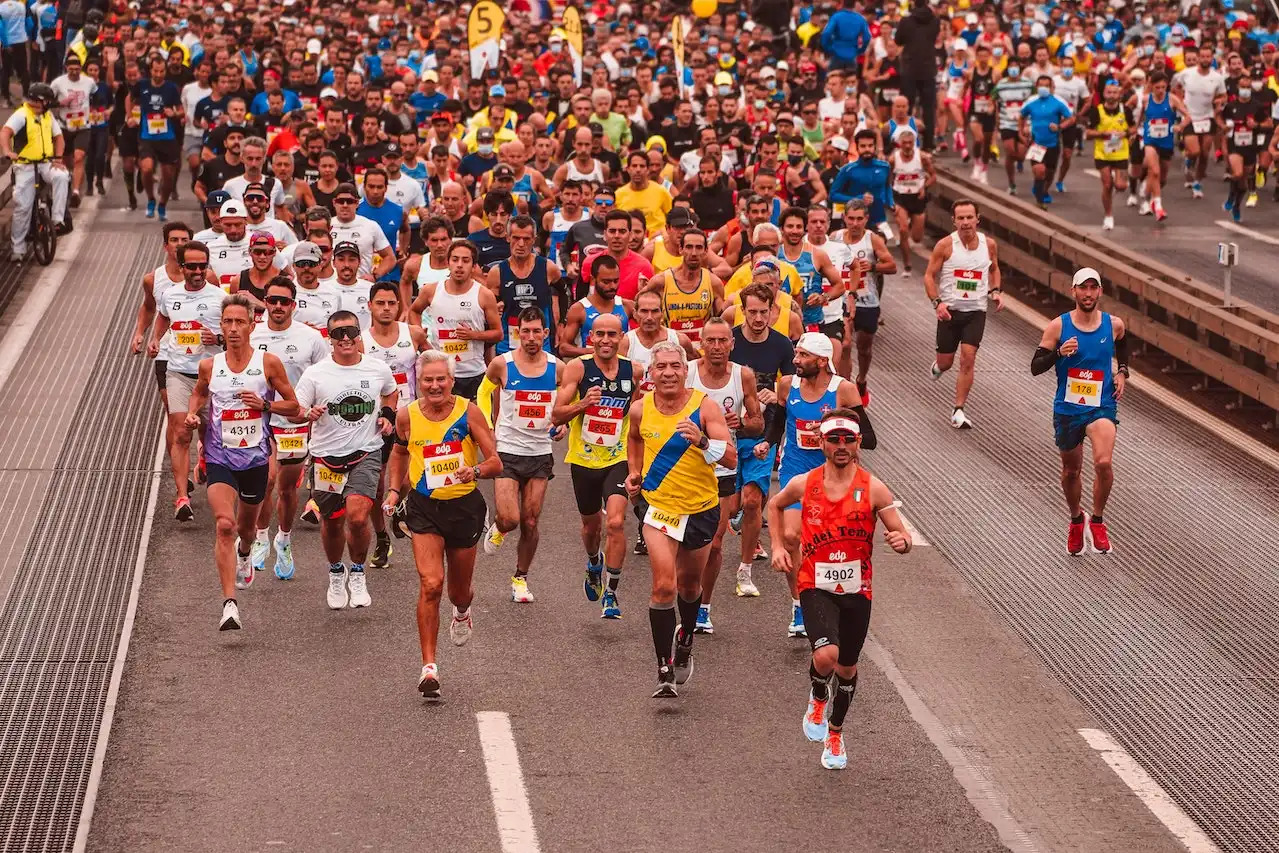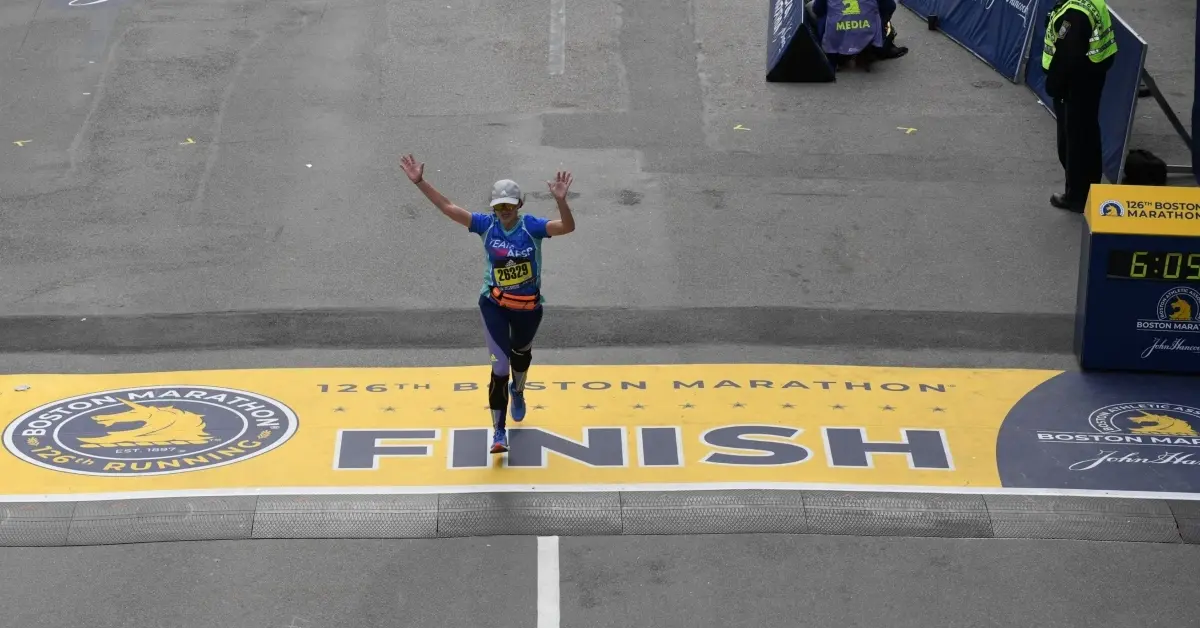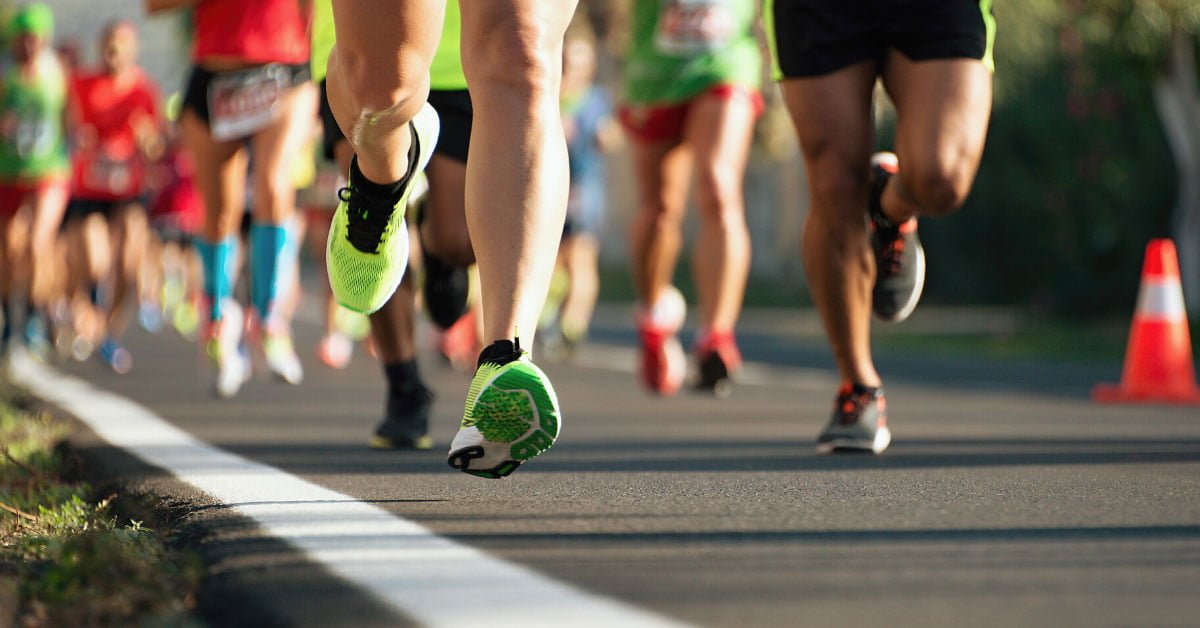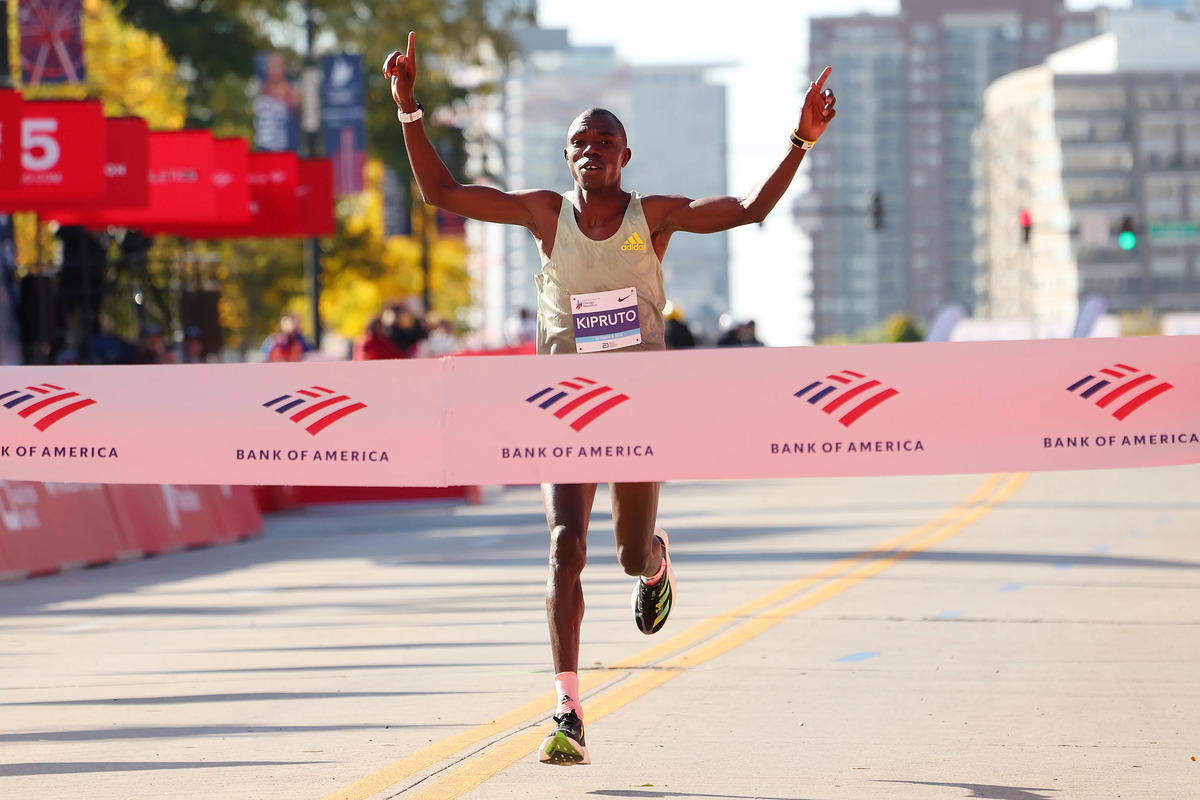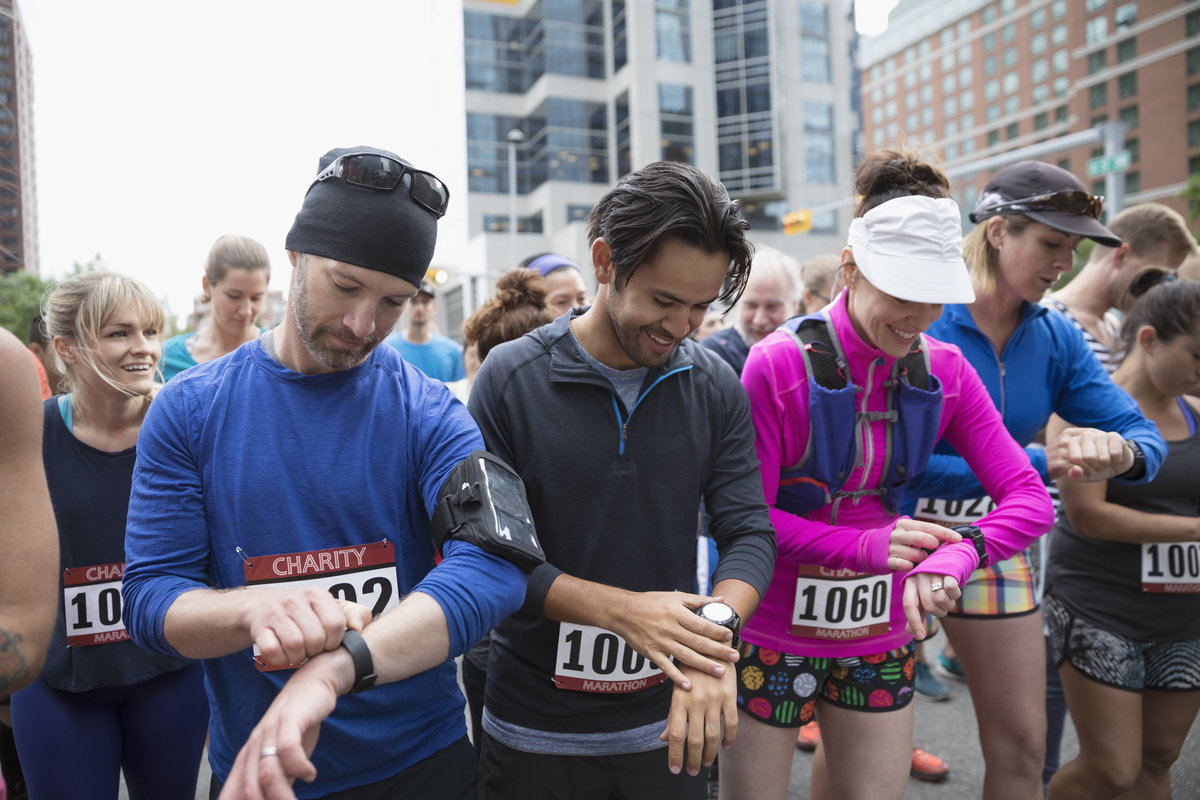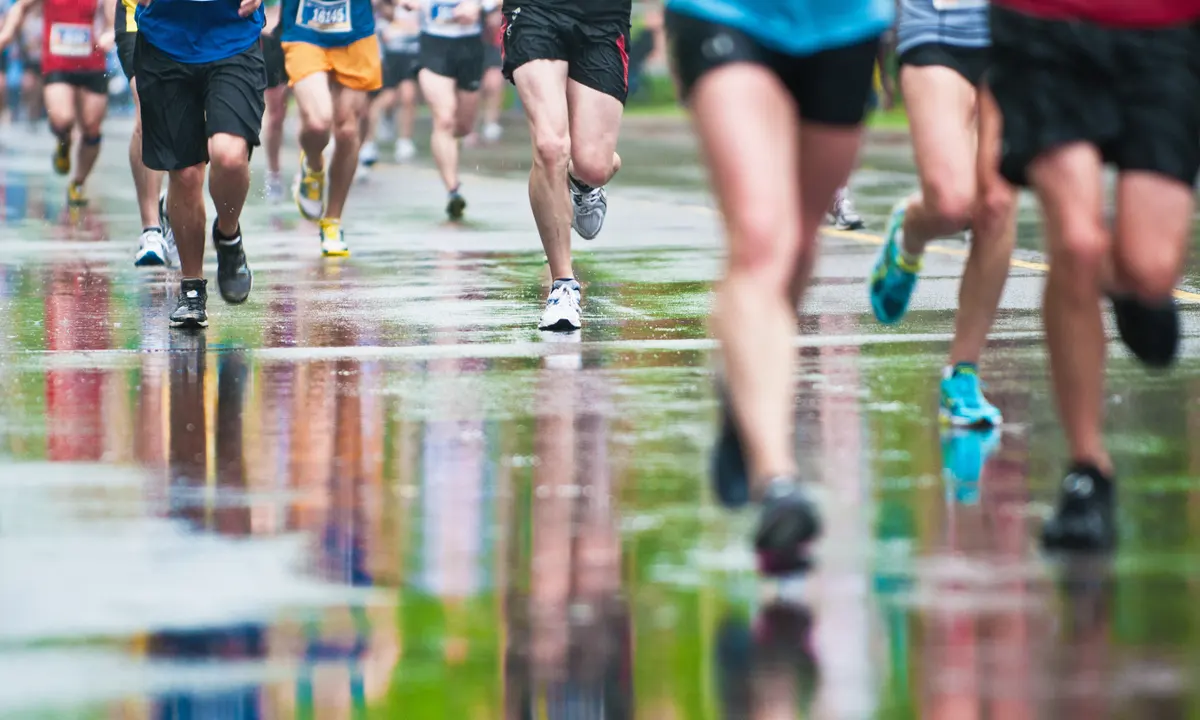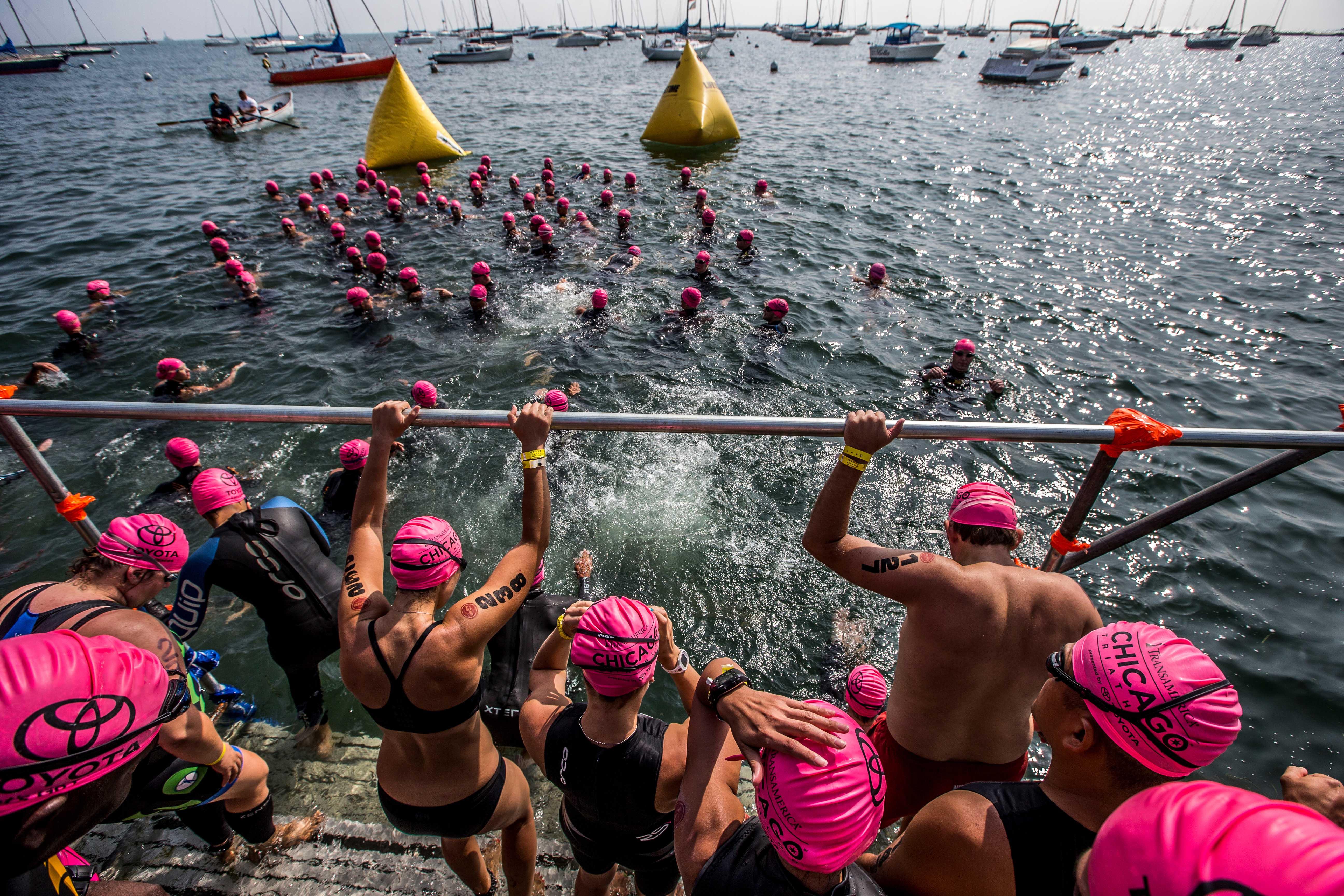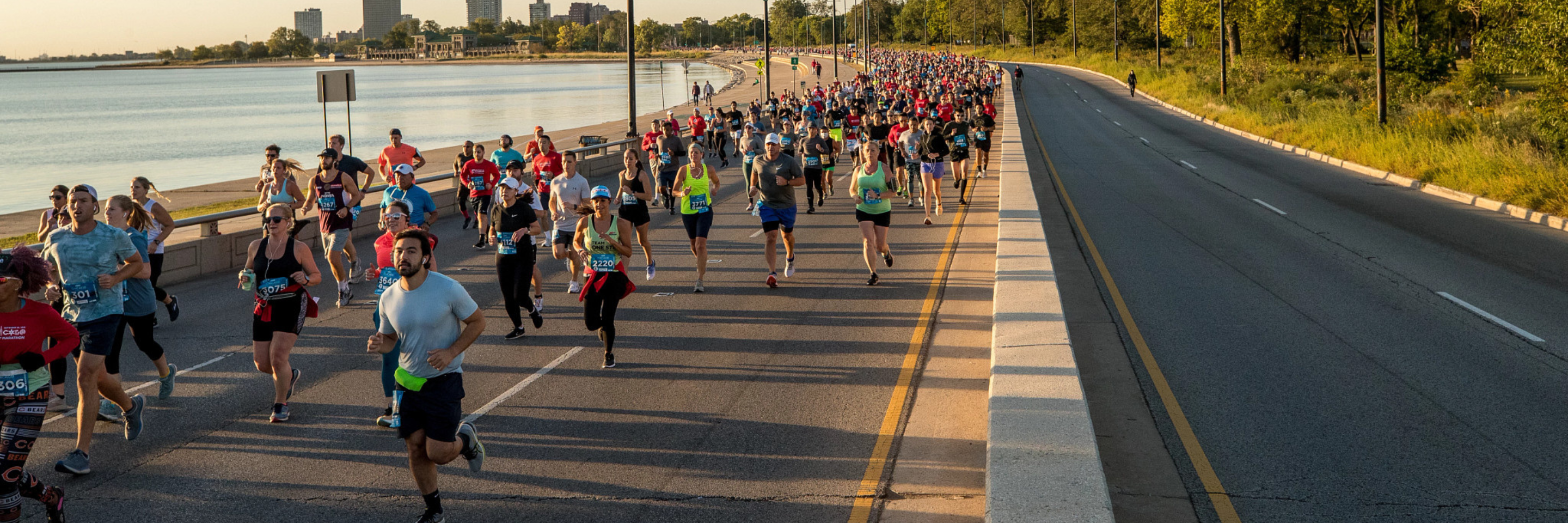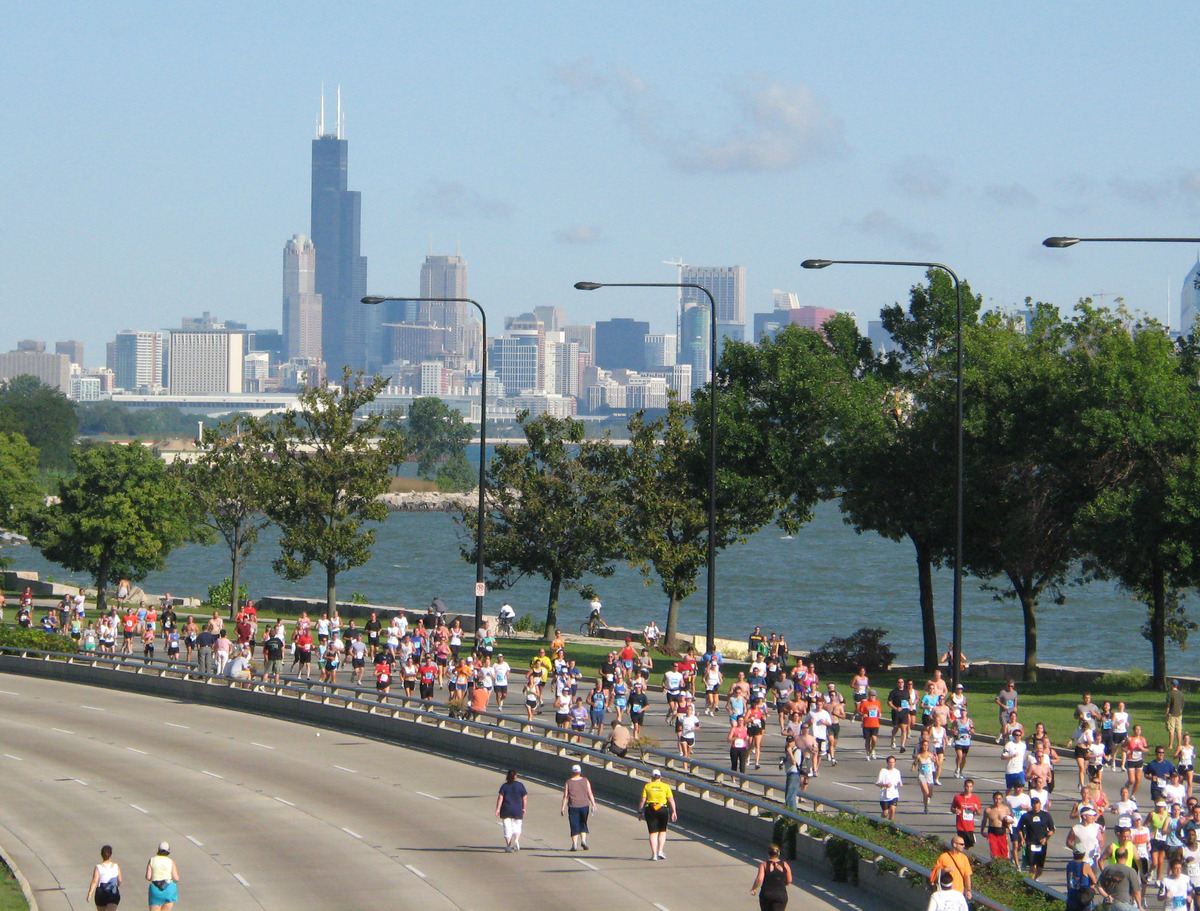

Featured
How Many Miles Is The Chicago Marathon
Modified: January 22, 2024
Discover the featured Chicago Marathon, a thrilling race that spans miles. Find out how many miles the marathon covers and get ready to join the excitement!
Introduction
The Chicago Marathon is one of the most prestigious and popular long-distance running events in the world. Thousands of runners from all around the globe gather each year to participate in this iconic race, which takes place in the vibrant city of Chicago, Illinois. The marathon attracts both professional athletes and amateur runners, all aiming to challenge themselves and reach the finish line.
The Chicago Marathon holds a special place in the hearts of many runners due to its rich history, scenic course, and the incredible support of the local community. The race not only showcases the athletic prowess and determination of the participants but also highlights the beauty and spirit of the city itself.
Throughout its existence, the Chicago Marathon has gained a reputation for its fast and flat course, making it a favorite among runners looking to achieve personal bests or qualify for other prestigious marathons. One key aspect that fuels the excitement and anticipation surrounding this event is the question of how many miles exactly one must conquer to complete the Chicago Marathon.
In this article, we will delve into the fascinating world of marathon measurement and explore how the distance of the Chicago Marathon is determined. We will examine the historical context, the official course and distance, as well as the controversies and challenges associated with measuring the exact mileage of the marathon. So, let’s lace up our running shoes and embark on this journey to discover just how many miles the Chicago Marathon truly is.
History of the Chicago Marathon
The Chicago Marathon has a rich and storied history that dates back to the early 20th century. The inaugural race took place on September 25, 1905, and was organized by the Illinois Athletic Club. The event was initially known as the “Chicago City Marathon” and attracted a modest number of participants.
Over the years, the race gained prominence and popularity, with the number of participants steadily increasing. In 1982, the Chicago Marathon truly made its mark on the international running scene when it became one of the six World Marathon Majors. This prestigious designation further elevated the race’s status and drew even more elite runners to compete.
One of the defining moments in the history of the Chicago Marathon came in 1984 when British runner Steve Jones shattered the world record, finishing the race in a remarkable time of 2 hours, 8 minutes, and 5 seconds. This extraordinary feat cemented the marathon’s reputation for its fast and conducive course for achieving record-breaking times.
Throughout its history, the Chicago Marathon has been a platform for runners of all backgrounds and abilities to come together and challenge themselves. The race has also been instrumental in promoting health and wellness within the local community, inspiring countless individuals to take up running and lead active lifestyles.
Unfortunately, the marathon has faced its fair share of setbacks and challenges along the way. In 2007, extreme heat forced race organizers to cancel the event midway through, prioritizing the safety and well-being of the participants. However, these instances of adversity have only served to strengthen the resilience and determination of both the organizers and the runners.
Today, the Chicago Marathon continues to be a highly anticipated event on the running calendar, attracting runners from all over the world. The marathon’s legacy is a testament to the passion, commitment, and indomitable spirit of all those who have been part of its history.
Course and Distance of the Chicago Marathon
The course of the Chicago Marathon is renowned for its flat and fast terrain, offering runners an excellent opportunity to achieve personal bests and record-breaking times. The race begins and ends in Grant Park, located in the heart of downtown Chicago.
The course takes participants on a scenic journey through the city’s diverse neighborhoods, showcasing iconic landmarks such as the Magnificent Mile, Lincoln Park, and the historic Old Town. Runners also get to experience the beauty of Lake Michigan as they traverse along the lakefront path.
The official distance of the Chicago Marathon is 26.2 miles, which is the standard distance for all marathon races around the world. The course is meticulously measured to ensure accuracy and to meet the requirements set by the International Association of Athletics Federations (IAAF).
Throughout the race, runners will encounter a series of aid stations strategically placed along the course, providing water, electrolytes, and nutritional support to help sustain their energy levels. In addition, the race course is lined with enthusiastic spectators who cheer and encourage the runners, creating an electric atmosphere that adds to the excitement and motivation.
One unique aspect of the Chicago Marathon is the absence of major hills or significant elevation changes. This makes it an attractive choice for both elite athletes seeking to set personal records and for first-time marathoners looking for a less demanding course.
The flat and fast nature of the course has led to some remarkable performances over the years. In 2019, the men’s world record was broken at the Chicago Marathon by Kenyan runner Eliud Kipchoge, who finished the race in an astonishing time of 2 hours, 1 minute, and 39 seconds.
Overall, the course and distance of the Chicago Marathon provide a challenging yet rewarding experience for participants. Whether it be the breathtaking views of the city, the vibrant atmosphere, or the opportunity to achieve personal goals, the race offers something truly special for every runner who takes on the challenge.
Importance of Accurate Measurement for Marathons
Accurate measurement of marathon courses is of utmost importance to ensure fairness and consistency in the sport. The precise measurement of the distance covered by runners not only ensures that records and achievements are recognized but also guarantees that every participant is competing on an equal playing field.
For athletes who dedicate weeks, months, and even years to train for a marathon, knowing the exact distance they will be running is crucial. Accurate measurement allows runners to plan their pacing, strategize their fueling and hydration strategies, and mentally prepare for the challenges they will face along the course.
In addition to individual runners, accurate course measurement is vital for race organizers, sponsors, and spectators. A precisely measured course provides credibility and confidence in the event, attracting elite athletes and participants from around the world. It also ensures that race results can be compared across different races and venues, allowing for fair competition and benchmarking.
To achieve accurate measurement, course certifiers utilize state-of-the-art technology and follow strict guidelines set by national and international governing bodies. The primary method used is the Jones Counter, a mechanical device attached to the lead bicycle that records the revolutions of the bicycle wheel. This data, combined with GPS technology and multiple measurements along the course, ensures the accuracy of the recorded distance.
Furthermore, the certification of a marathon course involves verifying that it meets certain criteria, such as the absence of unauthorized shortcuts, accurate placement of mile markers, and adherence to safety guidelines. This certification provides reassurance to participants that they are taking part in an official and reliable race.
Accurate measurement also has implications beyond individual races. It plays a role in the qualification process for other marathons, such as the Boston Marathon, where specific time standards must be achieved on certified courses. It also facilitates the comparison of performances across different races and allows statistical analysis to identify trends and measure progress in the sport.
In summary, accurate measurement of marathon courses is essential for maintaining the integrity of the sport, ensuring fairness, and providing a reliable benchmark for runners. It enables athletes to train effectively and make informed decisions during the race, while also bolstering the reputation and credibility of the event. Accurate measurement is a cornerstone of marathon running, allowing participants to push themselves to new heights and achieve their personal goals.
Factors Affecting the Exact Mileage of the Chicago Marathon
While every effort is made to ensure the accurate measurement of the Chicago Marathon course, several factors can affect the exact mileage experienced by participants. These factors can lead to slight variations in distance for individual runners, though overall, the course remains consistent for all.
One factor that can impact the distance of the marathon is the route itself. The Chicago Marathon course, like most marathons, is designed to showcase various landmarks and provide a unique experience for runners. The precise placement of turns, corners, and curves can slightly impact the overall distance covered.
Another factor is the line taken by individual runners throughout the race. With thousands of participants, it is inevitable that some runners may stray from the exact course due to factors such as congestion, positioning for turns, or personal navigation choices. While these variations are minimal, they can contribute to differences in mileage.
The accuracy of measurement devices also plays a role. While state-of-the-art technology is used, including GPS and the Jones Counter, there can be a small room for error. External factors such as GPS signal interference or the calibration of the Jones Counter could contribute to minimal measurement discrepancies.
Environmental conditions also need to be considered when measuring the exact mileage of the Chicago Marathon. Variables like temperature, humidity, and wind speed can affect a runner’s stride length and overall pace. These factors, although minor, can have a cumulative effect over the course of the marathon, potentially resulting in a slight deviation from the actual distance.
Additionally, accidental or intentional misjudgments during the measurement process can occur. While course certifiers follow strict guidelines and protocols, human error is always a possibility. Mistakes in calculating turns, misalignment of markers, or oversight during the measuring process can impact the final measured distance.
It is important to note that despite these factors, the Chicago Marathon does take numerous precautions and follows international standards to ensure the course remains as accurate as possible. The discrepancies in mileage, if any, are minimal and do not significantly affect the overall experience and outcomes for the vast majority of participants.
In summary, while the Chicago Marathon strives for accuracy in its measurement, factors such as the course design, individual runner choices, measurement device accuracy, environmental conditions, and potential human error can influence the exact mileage experienced by participants. However, the impact of these factors is minimal, ensuring that the overall integrity and fairness of the race are maintained for all runners.
Official Measurement and Certification of the Chicago Marathon
The measurement and certification process of the Chicago Marathon is a meticulous and rigorous one, adhering to the guidelines set by national and international governing bodies. Through this process, race organizers ensure the accuracy and legitimacy of the course, providing runners with confidence in their achievements and allowing for fair competition.
Before a marathon course can be certified, it must first be measured by a trained and authorized course measurer. The measurement is conducted using specialized tools and techniques, including the Jones Counter, a mechanical device attached to a bicycle that tracks the revolutions of the bicycle’s wheel.
The course measurer follows strict guidelines to ensure accurate measurement. They carefully mark key reference points along the course, such as the start and finish lines, and measure the distance between these points with precision. Multiple measurements are taken to account for any minor discrepancies or variations in the course.
Once the course has been measured, the data is analyzed and verified by certifying authorities. In the case of the Chicago Marathon, the course is certified by USA Track & Field (USATF), the governing body for the sport in the United States.
USATF has specific criteria that must be met for course certification. These criteria include ensuring that the course does not have any unauthorized shortcuts or advantageous downhill sections that could impact the distance measurements. The organization also mandates proper placement of mile markers, adherence to safety guidelines, and compliance with standard measurement protocols.
Upon meeting all certification requirements, the course is officially certified by USATF, and the event can proudly claim its status as an accurately measured and certified marathon. This certification not only provides reassurance to participants but also allows the race to be recognized by other organizations and competitions that require runners to meet specific qualification standards.
To maintain the integrity of the race and certification, the Chicago Marathon undergoes periodic re-certification. This ensures that any changes or modifications to the course, such as road construction or alterations to the route, are properly accounted for and measured accurately.
In summary, the Chicago Marathon undergoes an official measurement and certification process that adheres to the guidelines set by governing bodies like USATF. Through careful measurement techniques and adherence to strict criteria, the race organizers ensure the accuracy and legitimacy of the course. This certification not only instills confidence in the achievements of participants but also allows for fair competition and recognition within the running community.
Controversies Surrounding the Measured Distance of the Chicago Marathon
Despite the rigorous measurement and certification process of the Chicago Marathon, there have been instances where controversies and debates have arisen regarding the measured distance of the race. These controversies often stem from differing perceptions, technological limitations, and the inherent challenges of measuring such long-distance races accurately.
One common source of controversy is the variation in the recorded distance experienced by individual runners. While marathon courses are measured accurately, runners often deviate from the official course due to factors such as congestion, personal navigation choices, or running tangents. These variations in the path taken by runners can lead to discrepancies in individual mileage, causing some to question the accuracy of the measured distance.
Technological limitations can also contribute to controversies surrounding measured distances. While advanced devices such as GPS are used in the measurement process, external factors like signal interference or GPS drift can introduce small errors in distance calculations. Additionally, GPS measurements can be affected by the runner’s position within urban environments or tall buildings, further impacting the recorded distance.
Another source of controversy arises from different measurement methods used in the past. Over time, advancements in technology and measurement protocols have led to more accurate and standardized methods, resulting in differences when compared to older measurements. This can create confusion and fuel debates about the accuracy and consistency of the recorded distance over the years.
Occasionally, controversies around measured distance arise due to measurement errors or inconsistencies during the certification process. While course measurers follow strict guidelines, human error can still occur, leading to inaccuracies in measurement. Any discrepancies or mistakes discovered after certification can spark disputes and raise questions about the validity of the recorded distance.
It is important to note that controversies surrounding measured distance affect only a small percentage of participants, and the overall integrity of the race is not compromised. Race organizers and certifying bodies continually strive to improve measurement techniques and address any concerns that arise to ensure the most accurate distance for future events.
In summary, controversies surrounding the measured distance of the Chicago Marathon stem from various factors such as deviations in individual runner paths, technological limitations, changes in measurement methods over time, and occasional errors or inconsistencies during the measurement and certification process. While these controversies may spark debates and raise questions, the vast majority of participants still experience a highly competitive and rewarding race, and efforts are constantly made to improve measurement accuracy for future events.
Conclusion
The Chicago Marathon is not just a race, but a celebration of human determination, endurance, and the vibrant spirit of the city itself. It has a long and storied history, attracting thousands of runners from across the globe, all with the shared goal of conquering the iconic 26.2-mile course.
The accuracy and legitimacy of the measured distance are crucial for the integrity of the race. The meticulous measurement and certification process ensures that participants can trust the course and strive for their personal bests. While controversies and debates may arise regarding slight discrepancies or variations in individual mileage, the overall experience and outcomes of the race remain unaffected for the vast majority of participants.
Through the advancements in measurement technology and the adherence to strict guidelines set by governing bodies, the Chicago Marathon continues to enhance the accuracy and reliability of its measured distance. Race organizers work diligently to address concerns, improve measurement techniques, and maintain the race’s reputation as one of the premier marathons in the world.
Ultimately, the Chicago Marathon stands as a testament to human achievement and the power of the human spirit. The measured distance is an important aspect of the race, allowing runners to challenge themselves, pursue their goals, and experience the thrill of crossing the finish line. It is a journey marked by determination, community support, and the pride of participating in an event that has become an integral part of Chicago’s cultural fabric.
Whether you are a professional athlete chasing records, a seasoned runner seeking a new personal best, or a first-time marathoner looking to conquer a significant challenge, the Chicago Marathon offers an unforgettable experience on its accurately measured and certified course.
So lace up your running shoes, embrace the energy of the city, and join the thousands of runners who have left their mark on the streets of Chicago. The Chicago Marathon awaits, ready to welcome you to an extraordinary journey of accomplishment and camaraderie.
